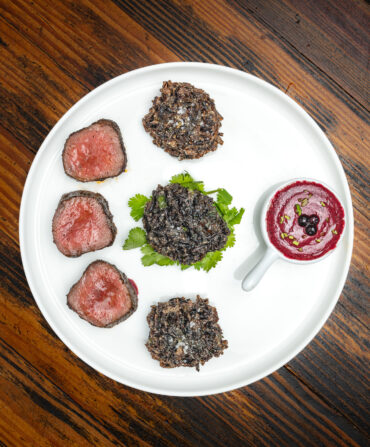When Darian Hernandez was seven, his grandmother brought home a small paper bag filled with what appeared to be baby oranges. “She handed my brother and me these two little fruits,” says Hernandez, now the executive chef at Brother Fox in his hometown of Pensacola, Florida. “We were surprised when she ate one whole, including the peel!” Turns out, Grandma’s farmers’ market haul was a different Florida favorite: the kumquat—it’s been called the “little gold gem of the citrus family”—which is native to China but has been grown in Florida since the late 1800s. “I had no idea that this tiny fruit could combine sweetness and tartness so perfectly,” Hernandez says. At the restaurant, he likes to work with the Nagami kumquat, which is the most common variety planted in the Sunshine State. Not only is it tasty, but it’s also an easy grower in the ground or a large pot, and with shiny dark green leaves and bright oval-shaped fruit, it’s a stunner in holiday centerpieces. Kumquats add a delightful citrus punch to salads and cocktails, and at Brother Fox, Hernandez’s kumquat mostarda (see recipe) has become a house favorite. Popular in Italian cuisine, mostarda is traditionally a mash-up of candied fruit and mustard, a sweet-and-tart relish with a hit of spice. It will become even more infused with the spices and kumquat essence after a day or two in the fridge. “It’s a versatile condiment that pairs well with various dishes,” Hernandez says. To contrast savory flavors, he likes to serve it alongside roasted meats, grilled sausages, charcuterie, and cheeses. Though at home, he still loves to eat a fresh kumquat whole, peel and all. “The delicate, zesty skin gives way to an explosion of flavor with every bite.”









